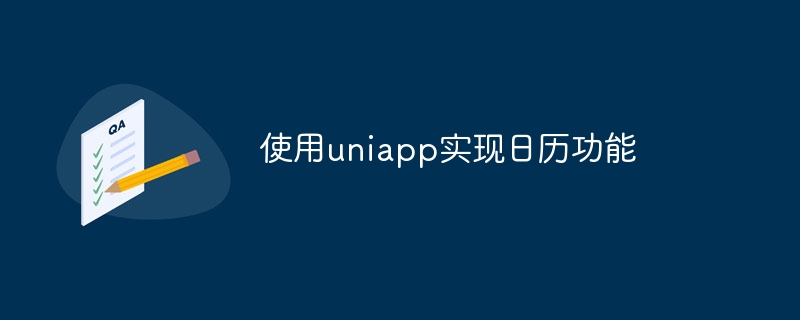

Use uniapp to implement the calendar function
With the development of the mobile Internet, the calendar function has become one of the necessary components for many apps and websites. In the cross-platform development framework uniapp, we can easily implement calendar functions and be compatible with multiple platforms, including iOS, Android, etc.
First, we need to use the date picker in the uniapp component library. uniapp provides the picker component, in which the mode attribute can be set to "date" to implement date selection. The specific code is as follows:
<template>
<view>
<picker mode="date" @change="dateChange" start="2020-01-01" end="2022-12-31">
<view class="picker">
{{ currentDate }}
</view>
</picker>
</view>
</template>
<script>
export default {
data() {
return {
currentDate: new Date().toISOString().slice(0, 10), // 设置当前日期
};
},
methods: {
dateChange(event) {
this.currentDate = event.detail.value; // 修改选择的日期
},
},
};
</script>In the above code, we use the picker component to implement the date picker. Among them, the start attribute and the end attribute are used to set the date range that is allowed to be selected. The currentDate property in data is used to save the currently selected date and display it in the view.
Next, we can implement the calendar function by monitoring the picker component. The specific idea is that when the user selects a date, we can obtain the selected date and process it. For example, we can obtain the month, week and other information of the date based on the date, and display it on the page. The following is a specific code example:
<template>
<view>
<picker mode="date" @change="dateChange" start="2020-01-01" end="2022-12-31">
<view class="picker">
{{ currentDate }}
</view>
</picker>
<view>
<text>所选日期的月份:{{ month }}</text>
<text>所选日期的星期:{{ week }}</text>
</view>
</view>
</template>
<script>
export default {
data() {
return {
currentDate: new Date().toISOString().slice(0, 10),
month: '',
week: ''
};
},
methods: {
dateChange(event) {
this.currentDate = event.detail.value;
let date = new Date(this.currentDate);
let month = date.getMonth() + 1;
let week = date.getDay();
this.month = month;
this.week = week;
},
},
};
</script>In the above code, we have added a text component to display the month and week of the selected date. In the dateChange method, we obtain the date object through new Date(), and use the getMonth() and getDay() methods of the object to obtain the month and week information, then save it to the month and week variables, and finally in displayed in the view.
In actual development, we can further optimize the functions of the calendar according to needs, such as turning calendar pages, highlighting the current date, etc. Through the flexible use of the picker component, we can implement various types of calendar functions according to specific business needs.
To sum up, it is relatively simple to use uniapp to implement calendar functions. Through the processing of picker components and date objects, we can easily implement calendar selection and display functions. In actual development, the calendar can be expanded and optimized according to specific needs to achieve richer and more practical functions.
The above is the detailed content of Use uniapp to implement calendar function. For more information, please follow other related articles on the PHP Chinese website!




